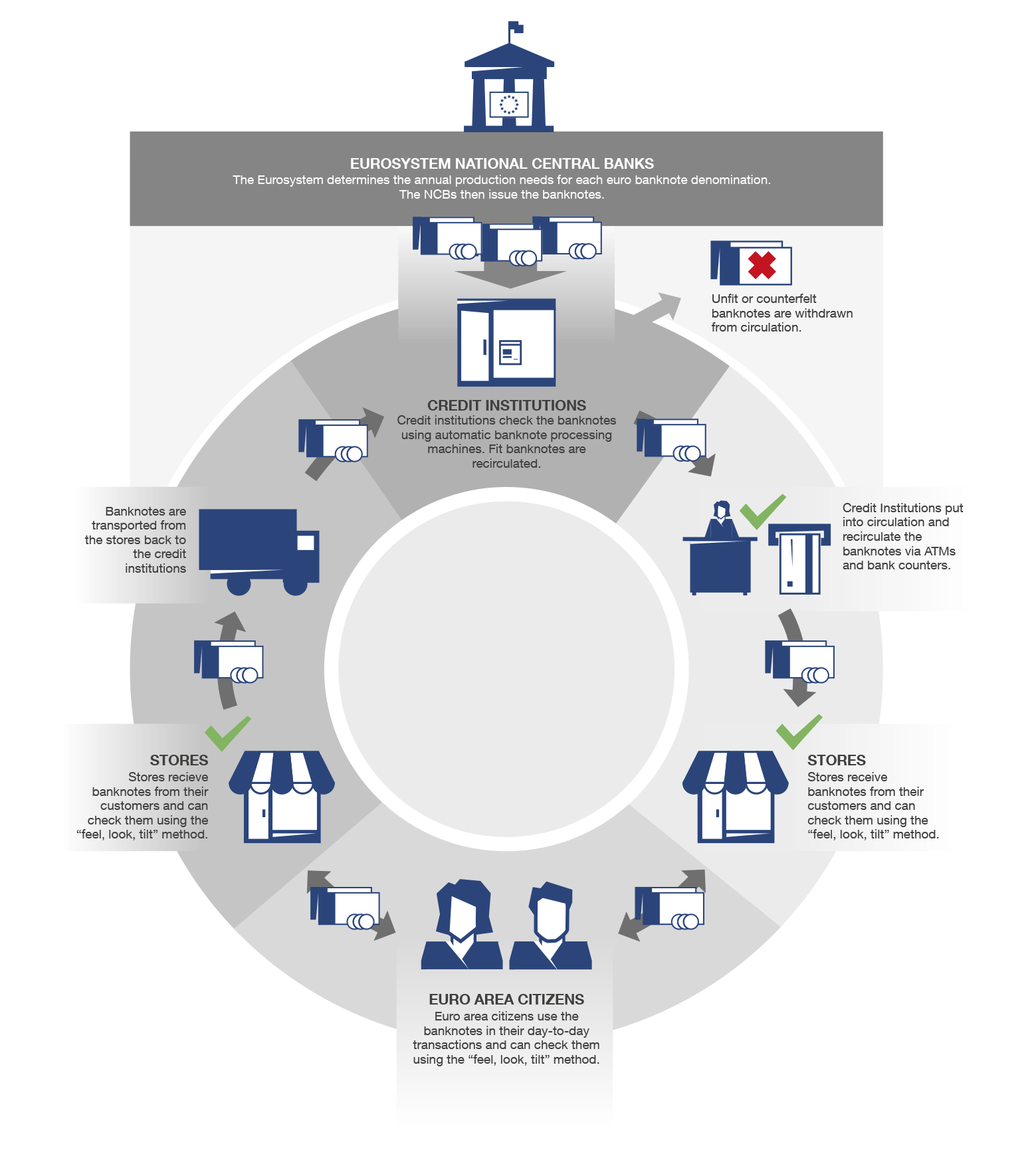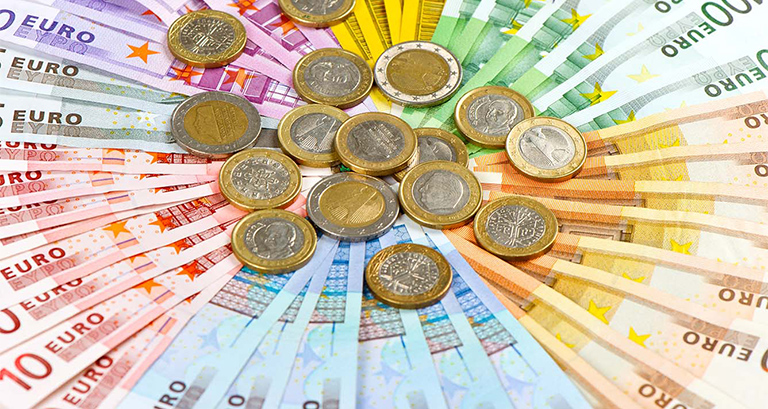The Banco de España plays a key role in the cash cycle It is responsible for the production and issuance of banknotes and the circulation of banknotes and coins.
Every year the European Central Bank and the national central banks (NCBs) of the euro area decide how many banknotes and coins are needed to meet public demand and replace damaged banknotes and coins.
The NCBs of the Eurosystem are responsible for the production of euro banknotes. In some cases, they are manufactured in their own printing works. In others, through printing works accredited by the European Central Bank or, through a company owned by the NCB itself (in the case of Spain, IMBISA).
Meanwhile, coins are minted or produced in Spain by the Fábrica Nacional de Moneda y Timbre-Real Casa de la Moneda (FNMT-RCM), which is a public entity attached to the Ministry of Finance and Civil Service, independent of the Banco de España. Subsequently, the Banco de España puts them into circulation and withdraws them on behalf of the Spanish State.
The banknotes and coins manufactured are sent to credit institutions, which distribute them to their customers so that they meet their cash needs. Among other purposes, customers use them to pay for their purchases in stores, where when they receive change they can easily check the authenticity of the banknotes with the "feel, look, tilt"![]() method and of the coins with the "5-step rule"
method and of the coins with the "5-step rule"![]() .
.
Cash circulates between stores, customers and banks. Banknotes and coins that are not need or are damaged are returned by credit institutions to the Banco de España, which checks their condition and authenticity. Counterfeit banknotes are withdrawn from circulation. Banknotes that are not fit for circulation are destroyed and replaced with new ones, and those which are in good condition are recirculated, which can happen several times if they remain in good condition. And the cycle begins again.
This figure shows how the main agents involved in the cash cycle are related:


